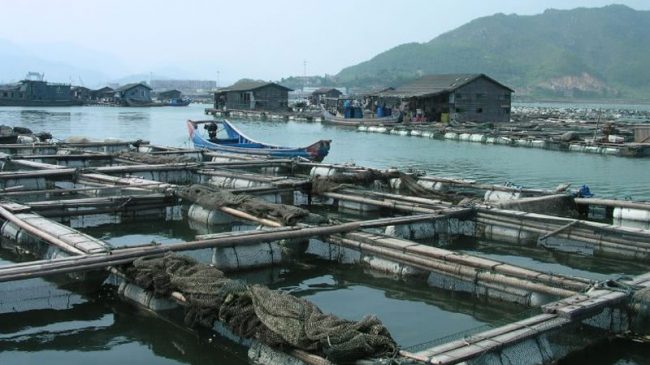In many parts of the world, including the United States, overfishing has depleted wild fish stocks. Several oceanic regions adjacent to the U.S. are already being fished to their maximum sustainable potential. The World Bank projects a nearly 50% increase in worldwide food fish consumption between 2006 and 2030. The U.S. alone will likely need an additional 15 million tons of food fish by the end of the century.
Open ocean aquaculture, also known as mariculture, offers a means of supplementing fish supplies to meet demand and reduce pressure on wild stocks. With new health guidelines recommending increased consumption of fish, many governments have facilitated an aquaculture industry as a means of providing inexpensive, high-quality, year-round protein, benefitting the health of those in low-income households in particular.
Projections for the global seafood industry assume that aquaculture accounts for practically all industry growth to 2030. Yet the United States lags far behind. Aquaculture currently represents 49 percent of global food fish production, of which the U.S. produces less than 1 percent.
The greatest impediment to a U.S. aquaculture industry is regulatory.
Federal agencies with tenuous claims to the disparate concerns of fish farming, as well as layers of state-level impediments, create a regulatory obstacle course that institutes a de facto ban on aquaculture in the U.S. With these impediments to viable aquaculture businesses, entrepreneurs find capital and insurance impossible to secure, preventing the development of an industry that otherwise might thrive and ensuring the U.S. continues to be a world-leading importer of seafood.
Objections to the development of open ocean aquaculture come from those who benefit from the status quo, such as the capture fishing industry and U.S. environmental groups.
While legitimate environmental concerns must be addressed—including water quality, fish escape, disease spread and habitat effects—aquaculture is generally considered to be a low-impact contributor to environmental problems.
For U.S. aquaculture to thrive, federal and state governments will have to remove these regulatory obstacles. Ideally, Congress would create a unified regulatory framework, vested in a single office. The model for this is Norway, whose one-stop permitting process facilitates an expansive marine aquaculture industry.
To avoid delays from environmental opposition, priority should be given to the designation of Aquaculture Management Areas in parts of the ocean where aquaculture is less likely to cause environmental harm, a practice advocated by the UN and currently used in New Zealand and Europe.
In many parts of the world, wild fish stocks are under pressure from growing demand and poor fisheries management. Aquaculture, which includes fish farming and underwater plant cultivation, offers a means of supplementing the supply of fish to meet demand and thereby reduce pressure on wild stocks.
While aquaculture already supplies a significant proportion of global fish demand, open ocean aquaculture—also known as mariculture—has grown far slower than inland aquaculture and currently represents only a small proportion of total aquaculture in the U.S.
This policy brief begins by reviewing the extent of the overfishing problem and analyzing aquaculture’s potential to address that problem.
Part 2 summarizes estimates of the economic potential of open ocean aquaculture in the U.S.
Part 3 considers the effects of open ocean aquaculture on water quality and other environmental considerations.
Part 4 details the regulatory barriers to expanding open ocean aquaculture in the U.S. and offers some possible changes that would reduce those barriers.

